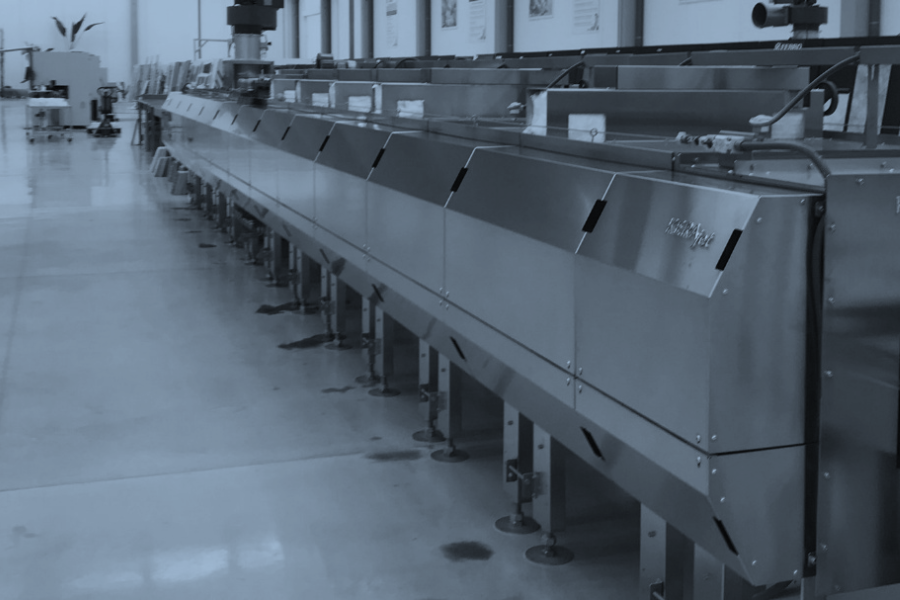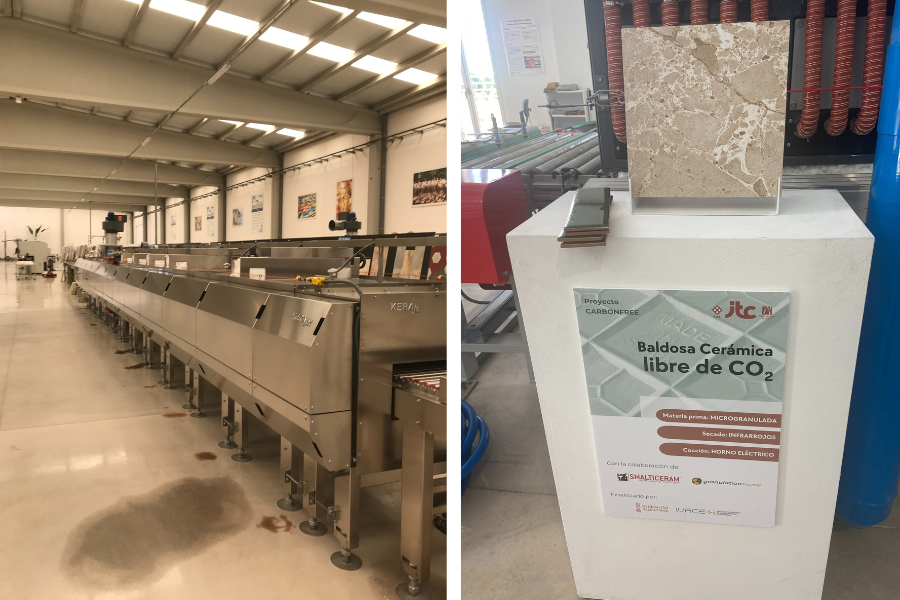Article
Electrification in Castellón: the ceramics industry future
Until now, the ceramic tile sector has been considered one of the most difficult to electrify. However, the transition to electric furnaces, a technology developed in the heart of the ceramic industry in Castellón (the province that accounts for nearly 94% of the industry), is not only an opportunity to significantly reduce CO2 emissions, but also to maintain competitiveness and improve product quality.



The ceramics industry in Castellón is a fundamental pillar of the Valencian and Spanish economies. In 2024, tile production in Spain amounted to 416 million square metres, up to €4.819B, according to data from the Spanish Association of Ceramic Tile Manufacturers (ASCER). Around 94% of this tile production originates in Castellón, a province where 80% of the industry's factories are located.
The ceramics revolution in Castellón: electrification and a sustainable future
The dependence on natural gas for firing tiles remains a major challenge in terms of competitiveness and sustainability. Gas accounts for approximately 20% of the cost of sales, with consumption of more than 12 terawatt-hours per year (TWh/year). To put this into context, this makes Castellón the province with the highest consumption of industrial natural gas in Spain, at 7%.
The transition to electric kilns offers a viable solution to reduce those emissions, while maintaining competitiveness and improving product quality. Electric kilns are more efficient, flexible and reliable, and can control temperature better, resulting in greater uniformity and quality in the final product.
This technology was developed in the province of Castellón itself, which represents an opportunity for the Valencian Community and for Spain as a whole, placing it at the forefront of the manufacture of a new generation of equipment and promoting the electrification of the ceramics industry in Castellón.
The ceramic tile manufacturing process
The ceramic tile manufacturing process
The manufacturing of tiles involves several key stages.
We list them below:
Preparation of composition and raw materials.
Shaping and pressing of the piece.
Drying to remove moisture and increase mechanical strength.
Design, glazing and decoration.
Firing of the pieces in the kiln.
Reduction of energy consumption.
Floor or wall tiles.
Classification and packaging.
Electric kilns for the ceramics industry in Castellón: advantages and key data
Of the total energy consumption in the ceramic tile production chain, 90% is thermal, distributed by process as follows: firing (55%), atomisation (36%) and drying (9%). The remaining 10% is electricity for mechanical and control processes. Glazes and colours also have to be prepared, which are essential for a high-quality finish.
Although all stages of the tile production process need to be decarbonised, firing, the stage with the highest thermal demand, is the one responsible for more than half of the emissions are produced. The electric kiln is not only the most sustainable alternative, but also the most efficient: by electrifying the process, direct CO2 emissions in the firing stage can be cut by 100%.
The explanation may seem simple, yet ingenious: electric kilns don’t need a chimney for combustion gases, preventing the loss of huge amounts of energy. In addition, the firing chamber is smaller, which minimises the amount of air to heat and the heat loss, making it more efficient. If we add the greater flexibility, versatility and accuracy of control of electric technologies, the advantages of this new technology are clear.
The ceramics industry in Castellón: economic driver and industry benchmark
The ceramics industry in Castellón, which accounts for 94% of the industry in Spain, is fundamental in the national economy, representing 2.7% of the country's industrial GDP. Most of the more than 200 producers (with 300 kilns, 100 atomisers and more than 500 dryers) are located in Castellón.
The ceramic tile industry also accounts for 7% of the industrial GDP in the Valencian Community and more than 28% of the total GDP in the province of Castellón. It also accounts for 7% of industrial jobs in the Valencian Community and 46% of industrial jobs in the province of Castellón.
Why electrification is key in Castellón: efficiency and emissions reduction

On the left side of the image, an electric kiln for firing ceramic tiles. On the right, a sample of ceramic tile.
Electrification is the most viable and rapid competitive alternative for the tile industry to continue reducing CO₂ emissions and meet the European Union’s targets, whose first milestone is in 2030. The installation of the first electric kilns paves the way for energy transition in an industry that is fundamental to the Valencian and Spanish economies.
Without competitiveness there can be no energy transition. In this case, competitiveness is based on the greater efficiency of electric kilns. This improvement can be monetised through energy saving certificates, which would equalise the cost of these kilns with their gas-fired competitors. And thermal efficiency is approximately 2.5 times greater: even with cheaper fossil gas, if you factor in the cost of CO2 emission rights, ceramics produced with kilns using renewable electricity will be more competitive.
Expected electricity demand due to electrification in Castellón
Electrifying kilns in the ceramics industry in Castellón will mean a significant increase in energy demand in the region, which will have to be gradual to achieve decarbonisation by the middle of the century.
This new model requires not only a technological transformation within industrial plants, but also that the regional electricity system be redefined to ensure a clean, reliable and flexible supply capable of adapting to new load curves. Advance planning and implementation, then, are key.
The Castellón area could see a gradual increase in electricity demand of around 0.5 TWh in 2030 — a key date to launch the first industrial projects — and more than 5 TWh per year in 2050. Since electricity demand in 2024 in the Valencian Community was more than 25 TWh, according to data from Red Eléctrica de España, this would mean a 20% increase over current consumption in the region and, therefore, even greater when concentrated solely in the province of Castellón.
In terms of power, the ceramic cluster will require an estimated additional capacity of between 1,200 and 1,600 megawatts (MW), depending on the operating profile of the kilns (continuous vs. batch loading), the thermal efficiency achieved and the integration of renewables. This is equivalent to the peak demand of a city like Valencia.
The Castellón Ceramics Institute (ITC in Spanish) has carried out an exhaustive study of the necessary equipment and has developed different scenarios for the pace of the transition to electric firing. This report shows that the transition to electric kilns will entail a substantial change in the topology of the regional electricity system.


Grid development, needs and forecasts for industry electrification in Castellón
To ensure that the electricity grid can cope with this increase in demand, significant investments in infrastructure must be made. This includes expanding the capacity of the grid, installing new transformers and upgrading transmission lines.
These investments must be coordinated with local authorities and electricity companies to prevent bottlenecks and ensure a stable and efficient electricity supply, given the timelines to develop this type of infrastructure.
How Iberdrola España is driving the energy transition in the ceramics industry in Castellón and Spain
At Iberdrola España, we have been working for more than 20 years to ensure that the energy transition acts as a key driving force in the transformation of the Spanish industrial fabric and in the green recovery of the economy and jobs.
We had 22,756 MW of renewable energy capacity in Spain at the end of the first half of 2025. In the Valencian Community, Iberdrola España manages more than 2,000 MW of installed renewable power, with the largest pumping station in Europe, the Cortes-La Muela complex, as its greatest exponent.
We also support the decarbonisation of the Spanish industrial fabric with partnerships such as the one we have had since 2021 with Porcelonasa, a leading company in the ceramics industry in the Valencian Community, to electrify its processes and reduce the CO2 it releases into the atmosphere. Initiatives such as the Q-Cero Alliance for the decarbonisation of thermal demand in Spain is another example.
One of Q-Cero's latest actions was the presentation and publication of the study 'Estimate of the ceramic industry’s electricity needs in Castellón to plan adaptation of electrical infrastructure. Public Report'.









